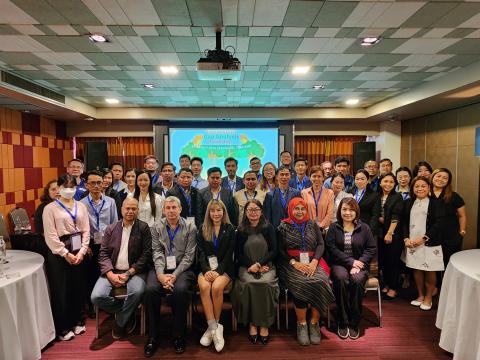Accelerating 30×30: Enhancing ASEAN Heritage Parks network through regional collaboration, mapping protected areas
Bangkok, THAILAND – In order to address current scope and coverage of protected areas and to further build up the ASEAN Heritage Parks (AHP) network, the ASEAN Centre for Biodiversity (ACB) organised an Ecosystem Gap Analysis Consultation Workshop in Bangkok, Thailand from 23 to 25 July 2024.
The AHP Programme—ASEAN’s flagship programme for biodiversity conservation, has grown to become a vital network of protected and conserved areas in the region. It is considered as the main defence of the region against biodiversity loss and the detrimental effects of climate change.
ASEAN’s pathway to achieve 30×30
Target 3 of the Kunming-Montreal Global Biodiversity Framework (KM GBF) or the “30×30” aims to protect at least 30% of the planet’s terrestrial, inland water, and coastal and marine areas by 2030. This goal calls for the establishment of effectively conserved, ecologically represented, well-connected, and equitably governed systems of protected areas and other effective area-based conservation measures. The ACB as the Secretariat to the AHP Programme, has initiated an ecosystem gap analysis for protected and conserved areas in the region towards achieving 30×30.
“Our ASEAN Heritage Parks (AHP) Programme, aligned with our ASEAN Biodiversity Plan, has an important role to contribute to this global ambition under Target 3. This workshop will contribute to defining, identifying ecologically representative protected area and other effective area-based conservation measures (OECMs) – to represent the full range of existing ecosystems, ecological processes and sites,” said Ms. Clarissa Arida, Senior Director of the ACB Programmes Department, in her opening remarks.
An ecosystem gap analysis is seen as a step towards having increased recognition of unique ecosystems in ASEAN that are considered the “last strongholds” in order to have a complete spectrum of representative ecosystems in the AHP network. The three-day workshop specifically intended to gather information and assess ecosystem coverage within the declared AHP sites.
During the 11th AHP Committee Meeting held in Singapore earlier in July, Executive Director Dr. Lim lauded the AHP Programme milestones for almost forty years but mentioned that there are still challenges that need to be addressed to cover more areas for biodiversity conservation.
“Currently, the information we have cannot ably answer questions about how close to, or far away from, representing the “complete spectrum” the AHP network is, and what key missing ecosystems are needed to be added to the network. A stock-taking of what is covered – and what is still missing, is therefore this important work we have here in Bangkok,” added Ms. Arida.
The AHP Programme through this activity would help define and identify well-connected protected areas and OECMs – through corridors, including integration into wider landscapes, seascapes and the ocean. This in turn, will be part of the ACB and of ASEAN’s contribution to achievement of the KM GBF and to the region’s very own ASEAN Biodiversity Plan.
The workshop was composed of country presentations from representatives of ASEAN Member States, group discussions, and knowledge exchange on vegetation classifications, protected area strategies, and identifying significant biodiversity areas. ACB’s Geographic Information System Officer, Mr. Jerome Alano facilitated exercises on familiarisation with maps and ecoregions and to help participants identify potential AHPs that fill in the gaps of underrepresented ecosystems and ensure ecological representation and connectivity.
Mr. John Parr, Protected Area Management Specialist and consultant of the Ecosystem Gap Analysis Workshop, provided an overview of biodiversity-related assessments in Southeast Asia and how they contribute to AHP identification. He emphasised the critical role these assessments play in identifying AHPs and outlined the current status of biodiversity and conservation efforts that would help contextualise the region’s challenges and opportunities in protecting its natural heritage.
The sessions highlighted the diversity in data sources, availability and classification systems among the AMS, and emphasised the need for standardised approaches to improve regional conservation efforts. In closing, Mr. Amiel Sarne, Biodiversity Conservation Division Director, summarised the key outcomes and outlined the next steps for regional cooperation in conservation.
This regional workshop was supported by the ACB Small Grants Programme of the KfW or the German Development Bank.

